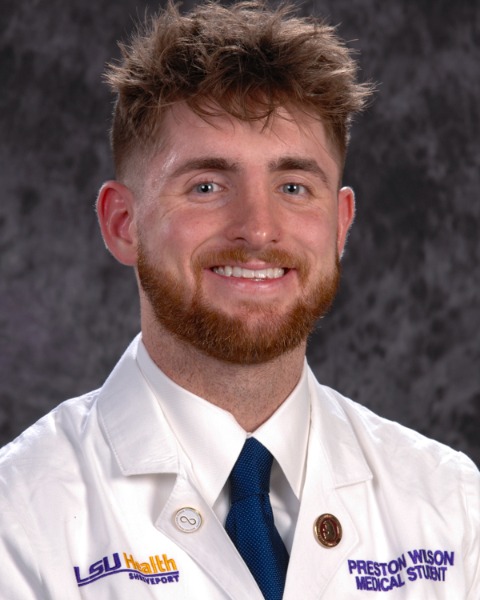Stereotactic and Functional
Effect of Different Optogenetic Stimulation Patterns of Nucleus Basalis of Meynert on Cortical Topography in Rat Model of Dementia

John P. Wilson, Jr., BS
Medical Student
Department of Neurosurgery, Louisiana State University Health Shreveport
Shreveport, LA, US
Presenting Author(s)
Introduction: Deep brain stimulation (DBS) of the nucleus basalis of Meynert (NBM) has been preliminarily investigated as a potential treatment for dementia. In this study, we use 32-channel EEG to investigate the correlation and effects of optogenetic stimulation of the NBM on varying signal topography in the cortex.
Methods: 192-IgG-saporin was injected into the NBM to produce dementia in rats. Next, all rats underwent unilateral implantation of a DBS electrode in the NBM. The experimental groups consisted of i-normal, ii-untreated demented, and iii-demented rats receiving NBM optogenetic stimulation. Memory was assessed pre- and post-stimulation using two established learning paradigms: novel object recognition (NOR) and auditory operant chamber learning. Brain sections spanning through the NBM, were processed for Choline Acetyltransferase (ChAT) immunostaining.
Results: Both normal and stimulated rats demonstrated improved performance in NOR and auditory learning compared to the unstimulated demented group using deep brain stimulation. The delta power increases with dementia, indicating loss of arousal induced by damage in the NBM cholinergic population. The resting delta is trending towards returning to the standard delta level after 17 sessions of 5-hour NBM-DBS. Our results indicate high theta-gamma phase-amplitude coupling (PAC) for normal rats, which disappears in demented (with cholinergic deficits) rats. After 17 sessions of 5hr NBM-DBS, the stimulated rat EEG indicates partial restoration of the PAC, providing preliminary support for NBM-DBS-induced restoration of network connectivity.
Conclusion : The present findings are building on previously established results using deep brain stimulation. Following the analysis of optogenetic stimulation and increased cortical locations using 32-channel EEG, further improvement and understanding is expected to be derived from these coordinated regions. Preliminary findings using deep brain stimulation suggest that naturalistic NBM burst DBS may offer a potential effective therapy for treating dementia and suggest potential strategies for the reevaluation of current human NBM stimulation paradigms.
Methods: 192-IgG-saporin was injected into the NBM to produce dementia in rats. Next, all rats underwent unilateral implantation of a DBS electrode in the NBM. The experimental groups consisted of i-normal, ii-untreated demented, and iii-demented rats receiving NBM optogenetic stimulation. Memory was assessed pre- and post-stimulation using two established learning paradigms: novel object recognition (NOR) and auditory operant chamber learning. Brain sections spanning through the NBM, were processed for Choline Acetyltransferase (ChAT) immunostaining.
Results: Both normal and stimulated rats demonstrated improved performance in NOR and auditory learning compared to the unstimulated demented group using deep brain stimulation. The delta power increases with dementia, indicating loss of arousal induced by damage in the NBM cholinergic population. The resting delta is trending towards returning to the standard delta level after 17 sessions of 5-hour NBM-DBS. Our results indicate high theta-gamma phase-amplitude coupling (PAC) for normal rats, which disappears in demented (with cholinergic deficits) rats. After 17 sessions of 5hr NBM-DBS, the stimulated rat EEG indicates partial restoration of the PAC, providing preliminary support for NBM-DBS-induced restoration of network connectivity.
Conclusion : The present findings are building on previously established results using deep brain stimulation. Following the analysis of optogenetic stimulation and increased cortical locations using 32-channel EEG, further improvement and understanding is expected to be derived from these coordinated regions. Preliminary findings using deep brain stimulation suggest that naturalistic NBM burst DBS may offer a potential effective therapy for treating dementia and suggest potential strategies for the reevaluation of current human NBM stimulation paradigms.

.jpg)